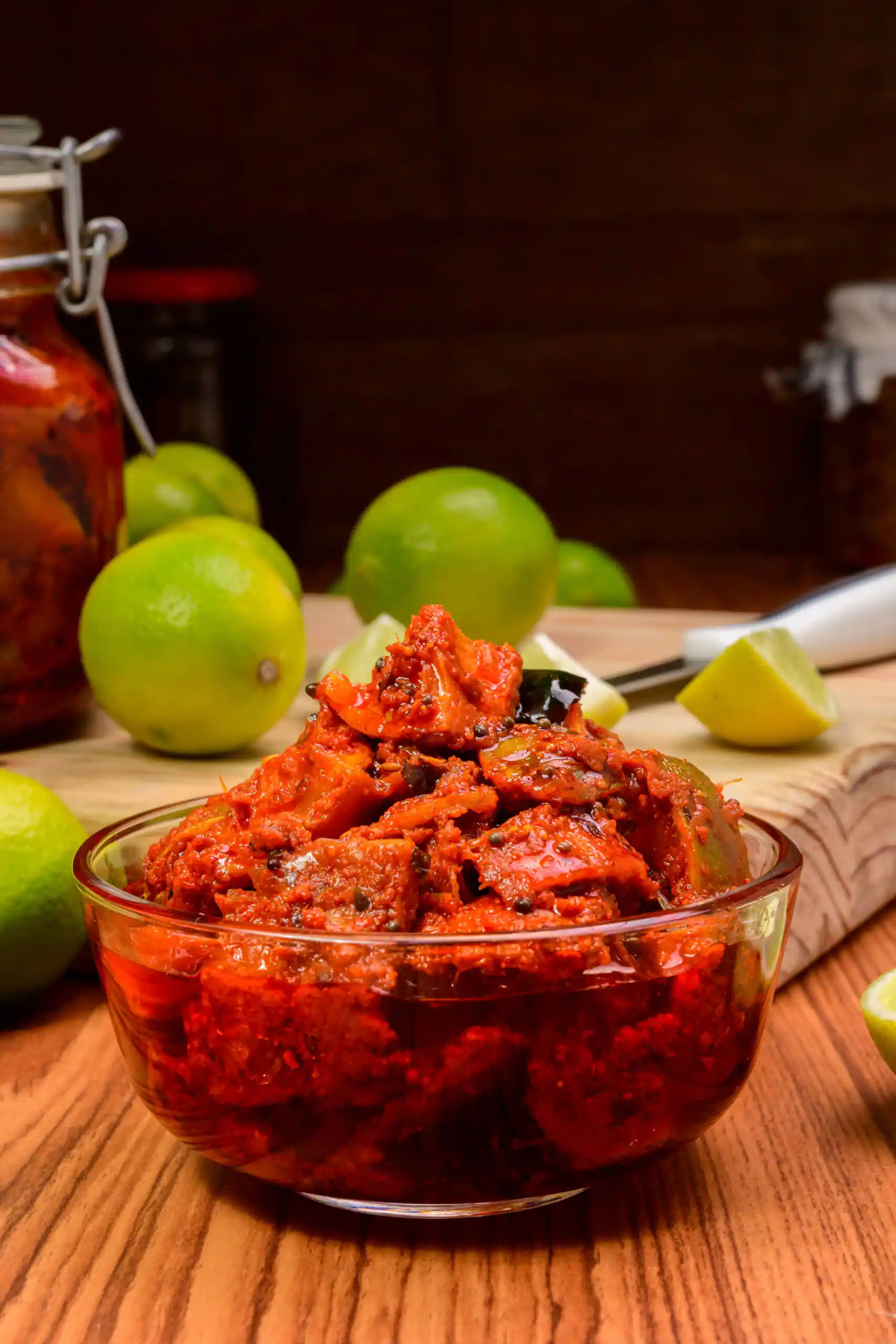Chatpata Nimbu Achar: A Tangy Treat From My Kitchen to Yours!
Namaste Doston! Kem Cho? Sat Sri Akal! Chef Curry Do-Pyaza here, ready to spice up your life with a recipe that’s close to my heart – Nimbu Achar! This isn’t just any pickle; it’s a burst of sunshine in a jar, a tangy explosion that will make your taste buds sing!
In India, we don’t just eat food, we celebrate it. And Nimbu Achar? It’s a star during the hot summer months, a welcome friend with every thali during Diwali, and a must-have at weddings. It’s that versatile! It’s a flavor that transcends seasons and occasions. My nani (grandmother) used to make the most amazing Nimbu Achar, and the aroma alone would make my mouth water!
A Little History Lesson
Pickling is an ancient art, my friends. It’s been around for centuries, a clever way to preserve food before refrigerators were even a twinkle in someone’s eye. Nimbu Achar, in particular, likely originated in the hot, sunny regions of India where lemons thrive. Each region has its own twist, its own secret blend of spices. This recipe is my family’s version, passed down through generations.
Get Ready to Pucker Up!
Preparation Time: 20 minutes
Cooking Time: 10 minutes (plus sun-drying time)
What You’ll Need (Ingredients)
- Nimbu (Lemons): 1 kg, choose the juicy, yellow ones!
- Sarson ka Tel (Mustard Oil): 1 cup – This gives it that authentic, pungent flavor.
- Methi Dana (Fenugreek Seeds): 2 tablespoons – Adds a slightly bitter, earthy note.
- Rai Kuria (Mustard Seeds, coarsely ground): 3 tablespoons – For that sharp, tangy kick.
- Lal Mirch Powder (Red Chilli Powder): 3 tablespoons – Adjust to your spice level!
- Haldi Powder (Turmeric Powder): 1 tablespoon – Adds color and health benefits.
- Hing (Asafoetida): 1/4 teaspoon – A pinch goes a long way!
- Kala Namak (Black Salt): 2 tablespoons – For that unique, savory flavor.
- Namak (Salt): To taste, about 4-5 tablespoons.
Let’s Get Cooking! (Step-by-Step Instructions)
- Wash and Dry: Thoroughly wash the lemons and pat them completely dry. This is crucial! No water should remain, or your achar won’t last long.
- Chop, Chop, Chop: Cut the lemons into small pieces. You can quarter them, or even smaller, depending on your preference. Remove any seeds you see.
- Spice Up the Oil: Heat the mustard oil in a pan until it smokes slightly. Let it cool down a bit, then add the hing. Be careful, it can splutter!
- Mix It All Up: In a large, clean, and dry bowl, combine the chopped lemons, methi dana, rai kuria, lal mirch powder, haldi powder, kala namak, and regular namak.
- Pour and Stir: Pour the slightly cooled mustard oil over the lemon mixture. Mix everything well, making sure all the lemon pieces are coated in the spices.
- Sun’s Out, Achar’s Out! Transfer the mixture to a clean, dry glass or ceramic jar. Cover the jar with a muslin cloth or a loose lid. Place the jar in direct sunlight for 5-7 days, stirring the mixture every day. This helps the lemons soften and the flavors meld together beautifully.
- Patience is Key: After sun-drying, taste the achar. Adjust the salt or chilli powder if needed. Store the achar in a cool, dry place. It will continue to mature and the flavors will deepen over time.
Chef Curry’s Top Tips!
- Dry, Dry, Dry: I cannot stress this enough! Make sure everything is completely dry – the lemons, the utensils, the jar. Moisture is the enemy of achar!
- Mustard Oil Magic: Don’t skip the mustard oil! It gives the achar its distinctive flavor and helps preserve it.
- Spice It Up (or Down): Feel free to adjust the amount of red chilli powder to your liking. If you prefer a milder achar, use less.
- Glass is Best: Always store your achar in a glass or ceramic jar. Plastic can react with the acids in the lemons and affect the taste.
Different Strokes for Different Folks (Cooking Methods)
- Gas Stove: The traditional method, as described above, works perfectly on a gas stove.
- Induction Stove: The same method can be used on an induction stove.
- Microwave (Quick Method): If you’re short on time, you can microwave the lemon and spice mixture for a few minutes (in short bursts) to soften the lemons. But remember, sun-drying gives the best results.
- Oven (For Roasting Spices): You can lightly roast the methi dana and rai kuria in the oven for a few minutes to enhance their flavor before grinding them.
Nutritional Nuggets
Nimbu Achar is not just delicious, it’s also good for you! Lemons are packed with Vitamin C, and the spices have various health benefits. However, remember that it’s high in sodium due to the salt content, so enjoy it in moderation.
Serving Suggestions
- With Your Meals: A small spoonful of Nimbu Achar is the perfect accompaniment to any Indian meal. It adds a tangy kick to dal, sabzi, and rice.
- With Parathas: Spread a little achar on a hot paratha for a quick and flavorful breakfast.
- As a Condiment: Use it as a condiment with sandwiches or wraps for an extra zing.
Time to Get Cooking!
So there you have it, my friends! My family’s cherished Nimbu Achar recipe. It’s a simple recipe, but it’s bursting with flavor and tradition. Try it at home and share it with your friends and family. I promise, they’ll love it!
Happy Cooking!
Your friend,
Chef Curry Do-Pyaza.
